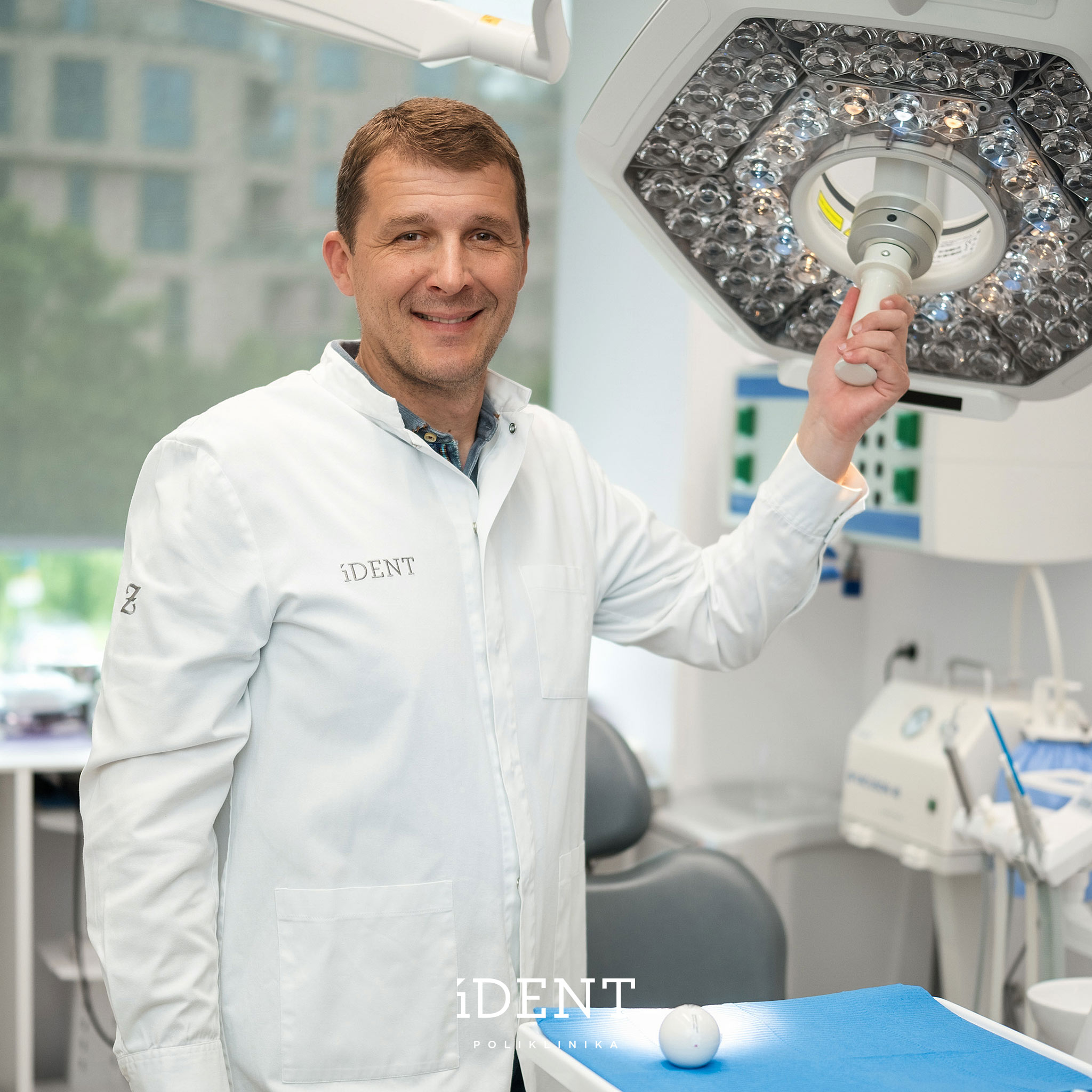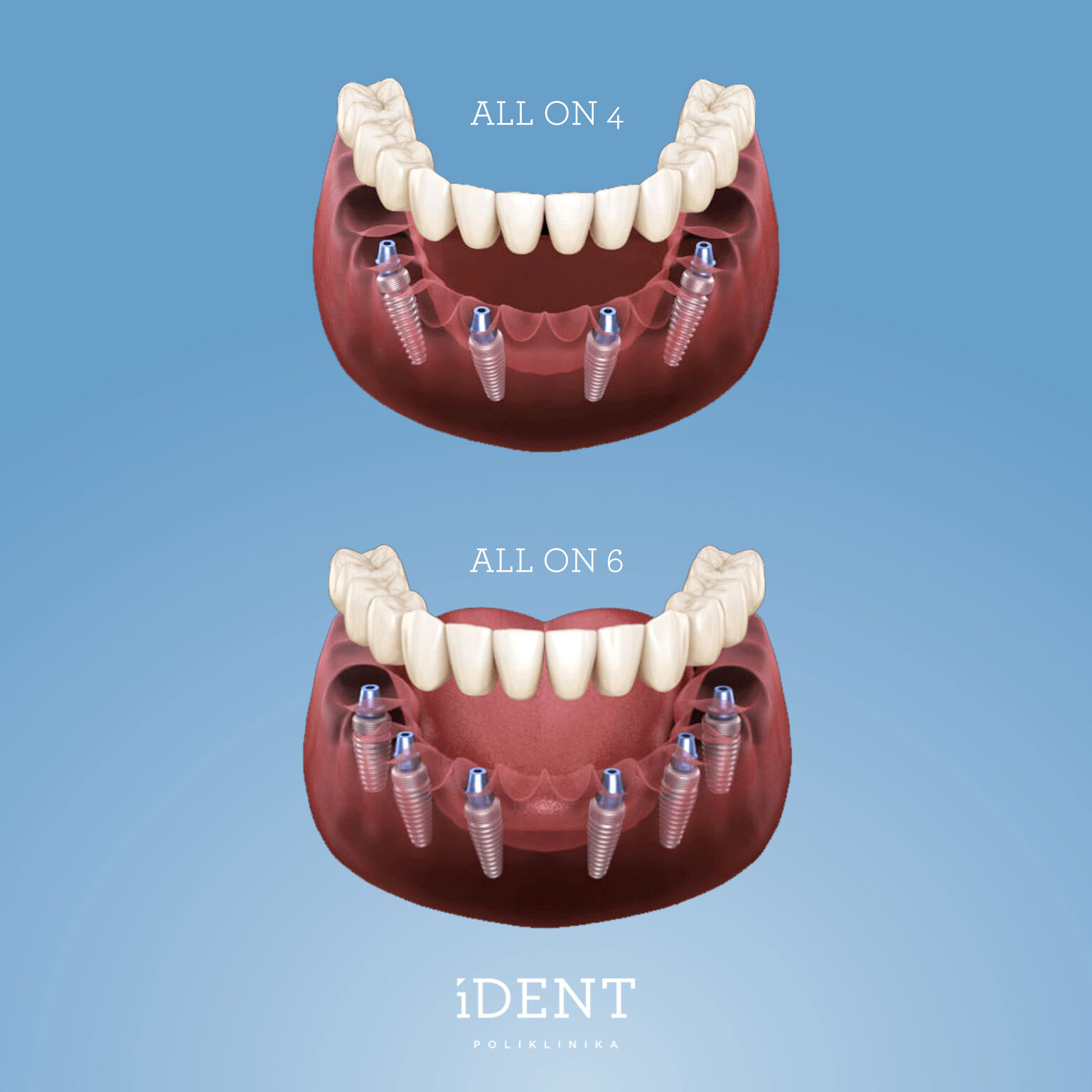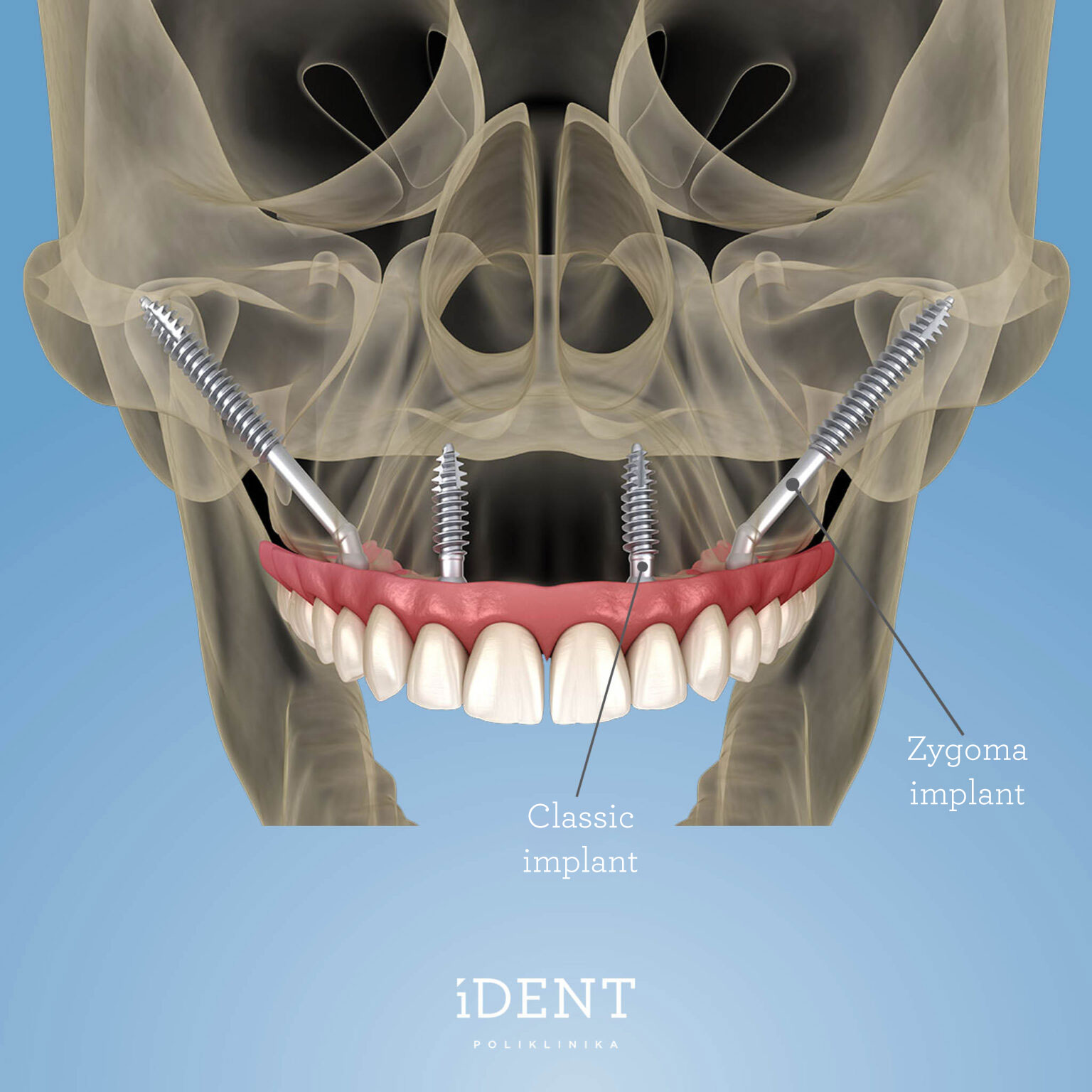Implantology

The lack of one, and especially several, teeth significantly impair the quality of life for every person. Such a deficiency, in addition to causing functional problems, is also an aesthetic defect that most people find difficult to accept.
Dentistry offers a solution for the lack of natural teeth in the form of oral implantology. It is a dental discipline based on oral surgery and dental prosthetics, i.e. the installation of special dental replacements (implants) made of alloplastic materials (alloys, ceramics).
Implants can be described as small screws that are implanted in the bone and replace one or more lost tooth roots. A more precise and accurate definition depends on the type of dental implants, but basically an implant is used to place an artificial tooth on it, which in its appearance and function acts in the same way as a real tooth.
Implantology provides solutions for all forms of edentulousness, and implants are installed in the following cases:
- Lack of one or more teeth.
- In the case of complete edentulousness
- in people who are dissatisfied with classic dentures.
Implant placement is a painless surgical procedure performed under local anaesthesia. Before the therapy itself, it is necessary to make an orthopan image of the jaw and CT, which allows a three-dimensional view of the jaw and a precise insight into the density, volume and dimension of the bone. In this way, the implantologist plans the course of therapy.
If the extracted tooth is not replaced with an implant or bridge, bone resorption, gum retraction and displacement of adjacent teeth from the opposite jaw into its space. This can lead to a deterioration in chewing function and strain on neighbouring teeth. That is why implants should be installed on time.

If several teeth are extracted, implants can be placed in their place and they, as well as the teeth, can be connected by a bridge – All on 4 and All on 6.
The main advantage of All on 4 and All on 6 is that, unlike removable dentures, it is a fixed operation. Fixed operation allows the patient to chew and digest food adequately, which improves the general condition of the body, while removable dentures are movable.
All on 4: A method that resolves complete toothing on 4 of the highest quality titanium implants in a single pass, providing a fixed hybrid bridge that allows normal function and aesthetics to produce a permanent solution. A durable solution can be made of premium composite materials or ceramic materials with a titanium or steel alloy backing.
All on 6: A method that resolves the complete dentition on 6 of the highest quality titanium implants in a single pass, providing a temporary fixed hybrid bridge that allows normal function and aesthetics until a permanent solution is made. After 3-6 months, the dental prosthetist, in cooperation with the dental laboratory, makes a permanent hybrid bridge consisting of a titanium or zirconia base on which zirconia or other ceramic crowns are placed.

Zygoma implants are a type of implant that is placed in the case of total edentulousness in the upper jaw, especially when there is not enough bone to place classic implants. They were named zygomatic after the zygomatic bone in the cheekbone of the face, because Zygoma implants are anchored there.
These revolutionary dental implants eliminate the need for bone grafting (sinus lift) because Zygoma implants are installed directly into the cheekbones, where there is enough support for them.

Zygomatic implants can avoid complex surgical procedures to replace the lost bone in the upper jaw. Also, the placement of Zygoma implants reduces the number of surgical procedures because, unlike other forms of treatment, they are placed in one procedure.
Another advantage of zygomatic implants is that the treatment time is shortened. A temporary bridge can be placed 2-3 days after the placement of the Zygoma implant. In other forms of treatment, fixed work on implants can be placed only after 12 months from the start of therapy.

Candidates for Zygoma implants are all people with a lack of multiple teeth, especially people with a lack of bone in the upper jaw. The lack of bone in the upper jaw is no longer an obstacle to implant placement in a toothless jaw. An awkward prosthesis or bone extension is not the only option, as zygomatic implants are the perfect long-term solution for people with these problems.
Thanks to the Zygoma All-on-4 technology, from now on there is no patient who could not have a beautiful smile on their face. This most advanced, and 100% successful method has been confirmed by scientific research, enables the solution of edentulism in cases where complete resorption of the upper jawbone has occurred.
Make an Appointment
How can an implant help me?
The answer to this question is simple if we consider that the implant is actually an artificial tooth that, in addition to looking like a real tooth, also performs the task of a tooth. Missing teeth is not only an aesthetic defect, but also causes several functional problems, from chewing difficulties to possible speech problems. Therefore, it can be easily concluded that dental implants will play an important role in improving the quality of life. They can improve the function of existing teeth or even completely take over their role.
Dental implants can solve the lack of one or several teeth, and today’s implantology provides the possibility of quickly and efficiently solving complete edentulousness – in this case, implants take on the role of denture supports.
In the case of implant placement, these are not temporary solutions, on the contrary. If the patient adheres to proper oral hygiene and visits the dentist regularly, dental implants can last a lifetime.
A prerequisite for their installation is a specialist examination and consultation with the patient to select the optimal therapy. The oral cavity is repaired, all deposits are removed from the tooth, and then the implant is installed.
Which implants are installed in your polyclinic?
Oral surgeons at the iDENT Polyclinic use dental implant systems from Nobel Biocare, Impla Schütz Dental and MIS. These are currently the highest quality implants available on the market, and they have been used for years throughout Europe and the world. Hundreds of thousands of patients a year around the world satisfied with these implants are proof of their superior quality and safety.
What is the success of implant placement therapy?
The success rate of this therapy today is 99.5%.
Is there a possibility of complications after implant placement?
Although there are always risks, statistics show a success rate of more than 99%, so the risk is minimal. However, very rarely it can happen that the implant cannot fuse with the bone, which can cause complications. The great importance of careful and thorough oral hygiene after implantation must be emphasized to prevent possible inflammation of the dental tissue. Namely, inflammation can cause implants to fall out, in the same way that it can cause real teeth to fall out.
Is the process of implant placement painful?
Implant placement is performed under local anaesthesia, which seeks to avoid pain and discomfort. However, as in any surgical procedure, the patient may experience slight discomfort. In practice, most patients remain pleasantly surprised because they expected significantly more intense pain.
Why is it good to install a dental implant?
Patients experience trauma on a daily basis when faced with the fact that they have to wear a total prosthesis. It makes it difficult to chew, can blister the palate, tongue or gums, creates difficulties in speech, and all this can be very disturbing in everyday life. In such cases, an implant can be the only salvation. Practice has shown that it is an easy, painless and safe procedure that is performed in the office under local anaesthesia.
The implant replaces the natural root of the tooth. New achievements in the fields of technology, physics, biochemistry and medicine have created the foundations for the continuous progress of dental implantology and the improvement of equipment and materials, all for the benefit and satisfaction of millions of patients around the world.
What is the procedure for implant placement?
What was considered alternative procedures a few years ago is now common practice. Prosthetic rehabilitation with the help of an implant that imitates the root of the tooth can be divided into two phases:
1. The surgical phase includes all procedures necessary for the placement of the implant in or on the bone (jaw) and its preparation for the reception of prosthetic work, i.e. the upgrade of the visible part of the tooth (crown, part of the tooth above the gums).
2. The prosthetic phase includes everything that is needed to place the tooth on the top or tips of the implant, but it follows after osseointegration. Namely, after the implant is placed in the bone, it takes several months (during which it is not in use) for the bone to fuse around it and strengthen it.
Can older patients be candidates for implant placement?
Older patients often think that their age can be an obstacle to implant placement. However, the most important factor is their health, not their age. If a person is healthy enough to have a tooth extracted, it can also be assumed that they are healthy enough to have an implant placed.
Given that there are various indications for implant placement, after a detailed examination, an assessment is made, and then recommendations for the best treatment.
What does dental care look like after implant placement?
Implant surgery is performed under local anaesthesia and is completely painless. So, the procedure itself will not hurt, but the installation site may swell. Therefore, it is important to use cold compresses at the installation site immediately after the operation, which will reduce swelling.
Also, it is mandatory to maintain optimal oral hygiene, which is obtained after the procedure itself. Although implants are not exposed to oral bacteria and cannot become inflamed like natural teeth, the surrounding tissue is not spared, whose inflammation can significantly interfere with the process in which the body accepts the implant.





